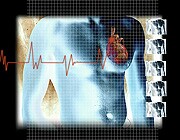
MONDAY, Aug. 22 (HealthDay News) — The risk of infection for patients with heart pacemakers and defibrillators has more than doubled since the early 1990s and it may be because these patients are sicker than they used to be, U.S. researchers report.
They analyzed a national database of hospital discharge records and found that infections related to cardiac electrophysiological devices (CIEDs) increased by 210 percent between 1993 and 2008.
CIEDS include permanent pacemakers and implantable cardioverter defibrillators (ICDs).
The Jefferson Heart Institute team also found that a spike in infections after 2004 correlated with a rise in the number of CIED patients with four other major health problems (“comorbidities”): kidney failure, heart failure, diabetes and respiratory failure.
“We believe the growing number of clinical comorbidities in this patient population plays a large role in the increase in infections associated with CIEDs,” study author Dr. Arnold J. Greenspon, a professor of medicine at Jefferson Medical College at Thomas Jefferson University, said in a university news release.
“The patients are sicker, which may place them at higher risk for infection,” explained Greenspon, who is also director of cardiac electrophysiology at Thomas Jefferson University Hospital.
Male patients older than 65 had the highest infection rates.
The study appears in the Aug. 30 issue of the Journal of the American College of Cardiology.
More information
The American Heart Association has more about implantable devices.

